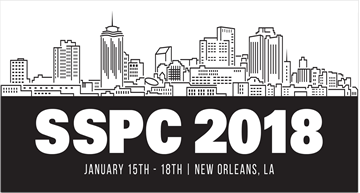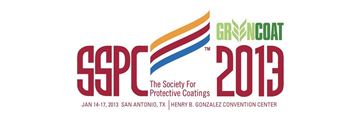Search
Products tagged with 'coatings'
View as
Sort by
Display
per page
Straining at a Gnat and Swallowing a Camel: Safety and Performance Issues with Two - Part Urethane Finish Coats
Product Number:
41206-272-SG
Publication Date:
2006
$20.00
Study of Scribe Type on Accelerated Underfilm Corrosion Creep
Product Number:
41211-642-SG
Publication Date:
2011
$20.00
Successful Preservation Practices for Steel Bridge Coatings
Product Number:
51217-033-SG
Publication Date:
2017
$20.00
Surface Prof le Effects: What We Know/What We Don’t Know/What We Should Know
Product Number:
51217-067-SG
Publication Date:
2017
$20.00
Surface Tolerant Epoxy Coating Application on Marine Surfaces in High Humidity and Wet Environments
Product Number:
41206-220-SG
Publication Date:
2006
$20.00
Surface-Tolerant Elastomeric Waterborne Acrylic Coatings for the Protection of Steel
Product Number:
41205-154-SG
Publication Date:
2005
$20.00
Technical Paper: Petroleum-Based Corrosion Inhibitor
Product Number:
41206-268-SG
Publication Date:
2006
$20.00
Technology Assessment of Architectural Coatings Relative to Regulatory Concerns in the South Coast Air Basin
Product Number:
41208-413-SG
Publication Date:
2008
$20.00
Technology Assessment of Architectural Coatings Relative to Regulatory Concerns in the South Coast Air Basin-Draft
Product Number:
41207-320-SG
Publication Date:
2007
$20.00
Technology from Outter Space to Earth: Silicones as Protective Coatings
Product Number:
41214-864-SG
Publication Date:
2014
$20.00
Temporary Coating for In Process or Storage Applications
Product Number:
51218-092-SG
Publication Date:
2017
$20.00
Test Method Development for Improved Laboratory Accelerated Weathering of High Performance Coatings
Product Number:
41213-803-SG
Publication Date:
2013
$20.00
Recently viewed
-
 03160 RISK BASED CORROSION MANAGEMENT SYSTEM FOR OILFIELD PRODUCTION INSTALLATIONS – DEVELOPMENT, METHODOLOGY AND APPLICATION
03160 RISK BASED CORROSION MANAGEMENT SYSTEM FOR OILFIELD PRODUCTION INSTALLATIONS – DEVELOPMENT, METHODOLOGY AND APPLICATION
-
 Case Studies On ECDA and SCCDA
Case Studies On ECDA and SCCDA
-
 51312-01374-Short Term Atmospheric Corrosion of Low Carbon Steel
51312-01374-Short Term Atmospheric Corrosion of Low Carbon Steel
-
 NACE Publication 5A195-1995-SG, State-of-the-Art Report on Controlled-Flow Laboratory Corrosion Tests
NACE Publication 5A195-1995-SG, State-of-the-Art Report on Controlled-Flow Laboratory Corrosion Tests











